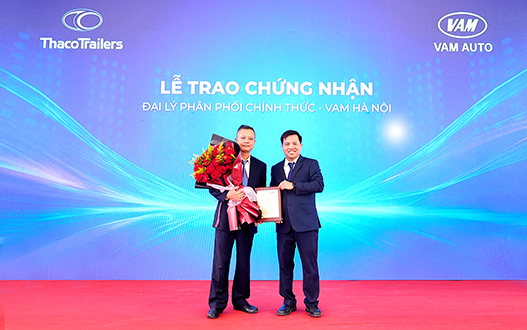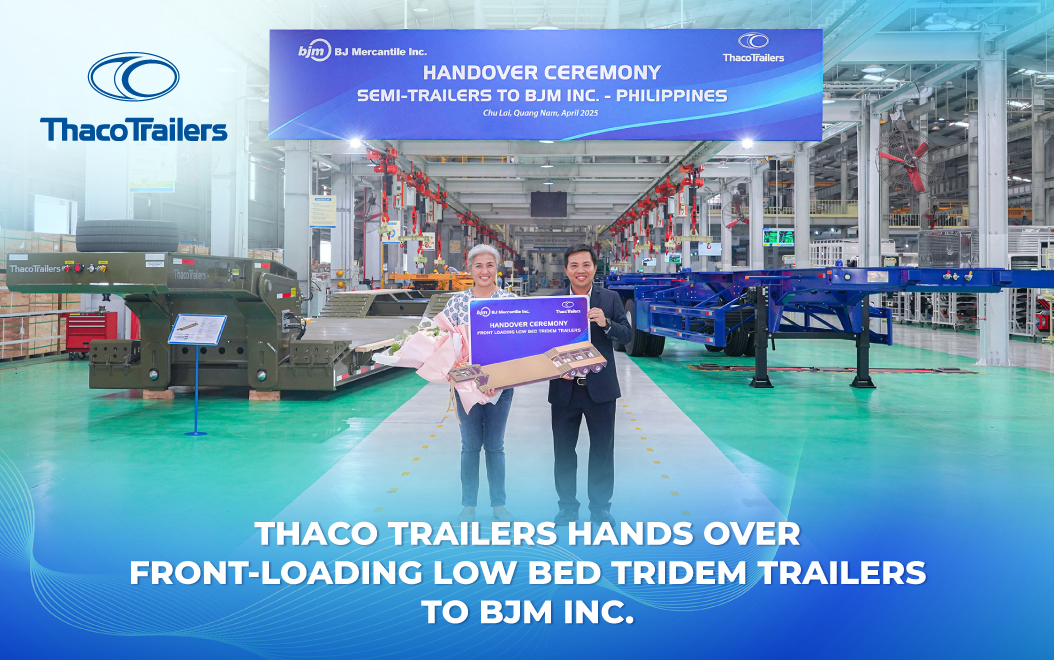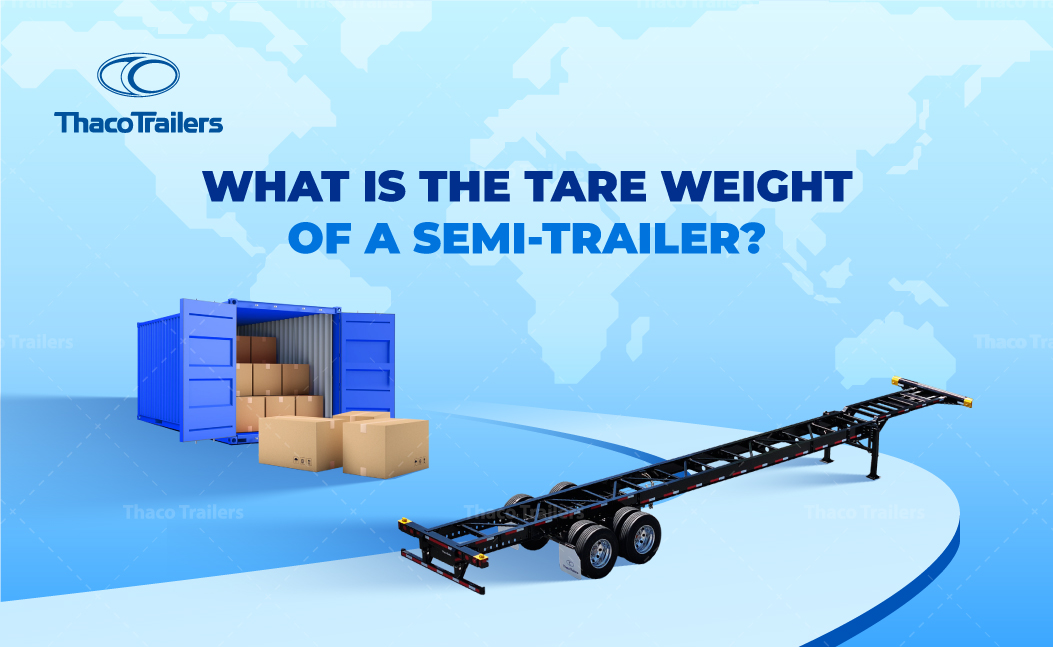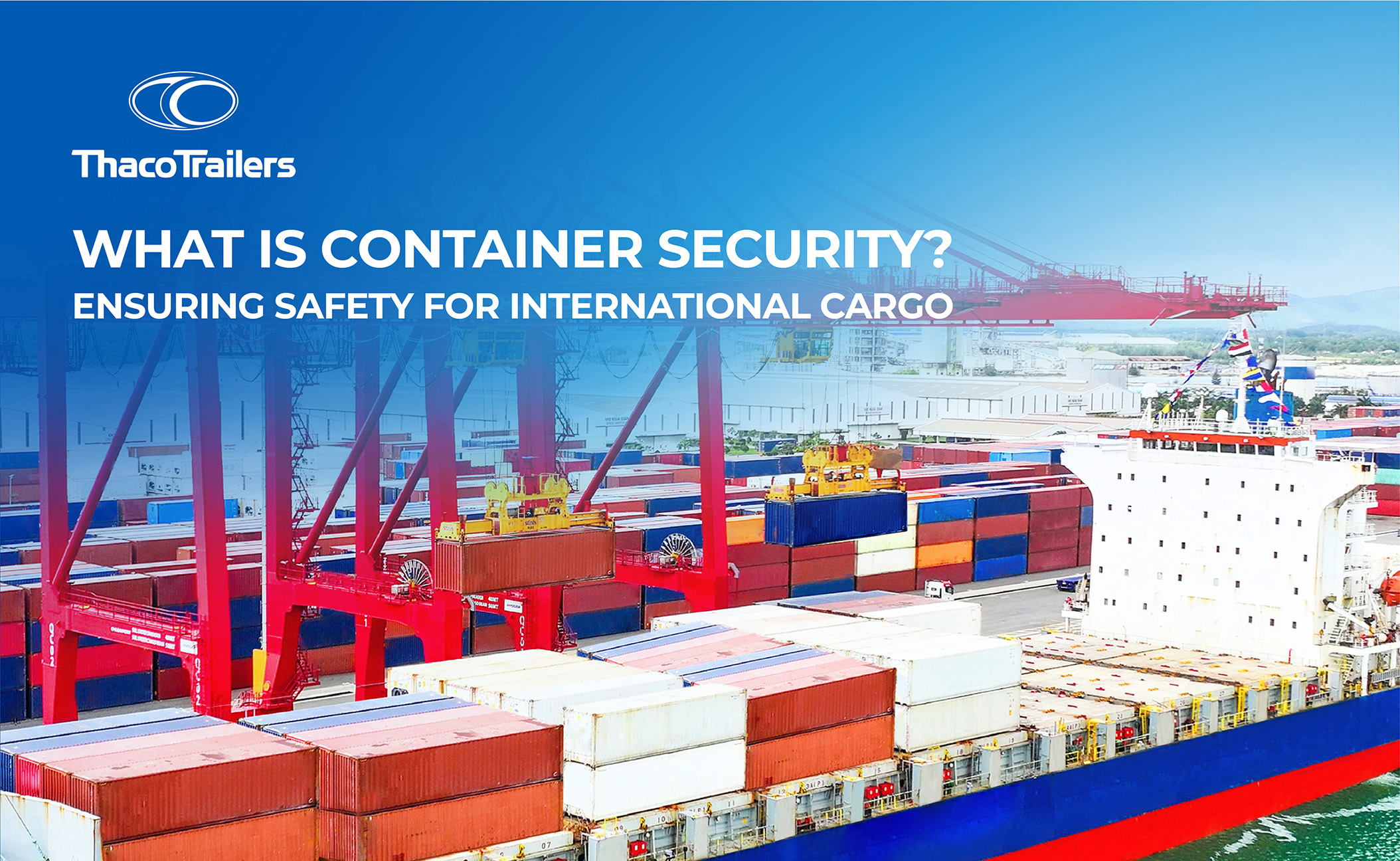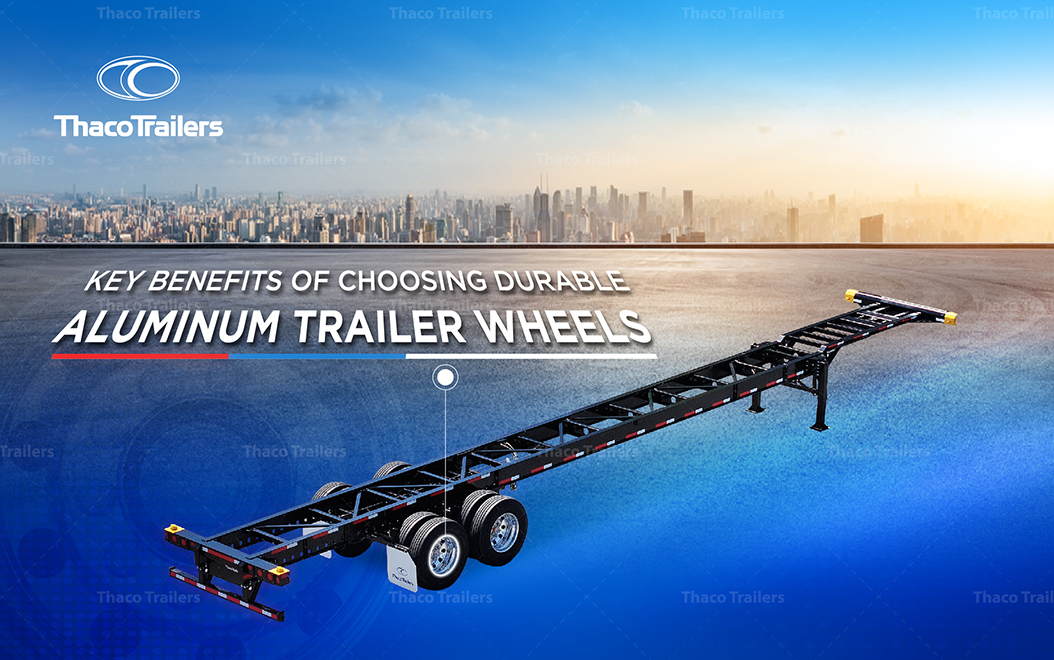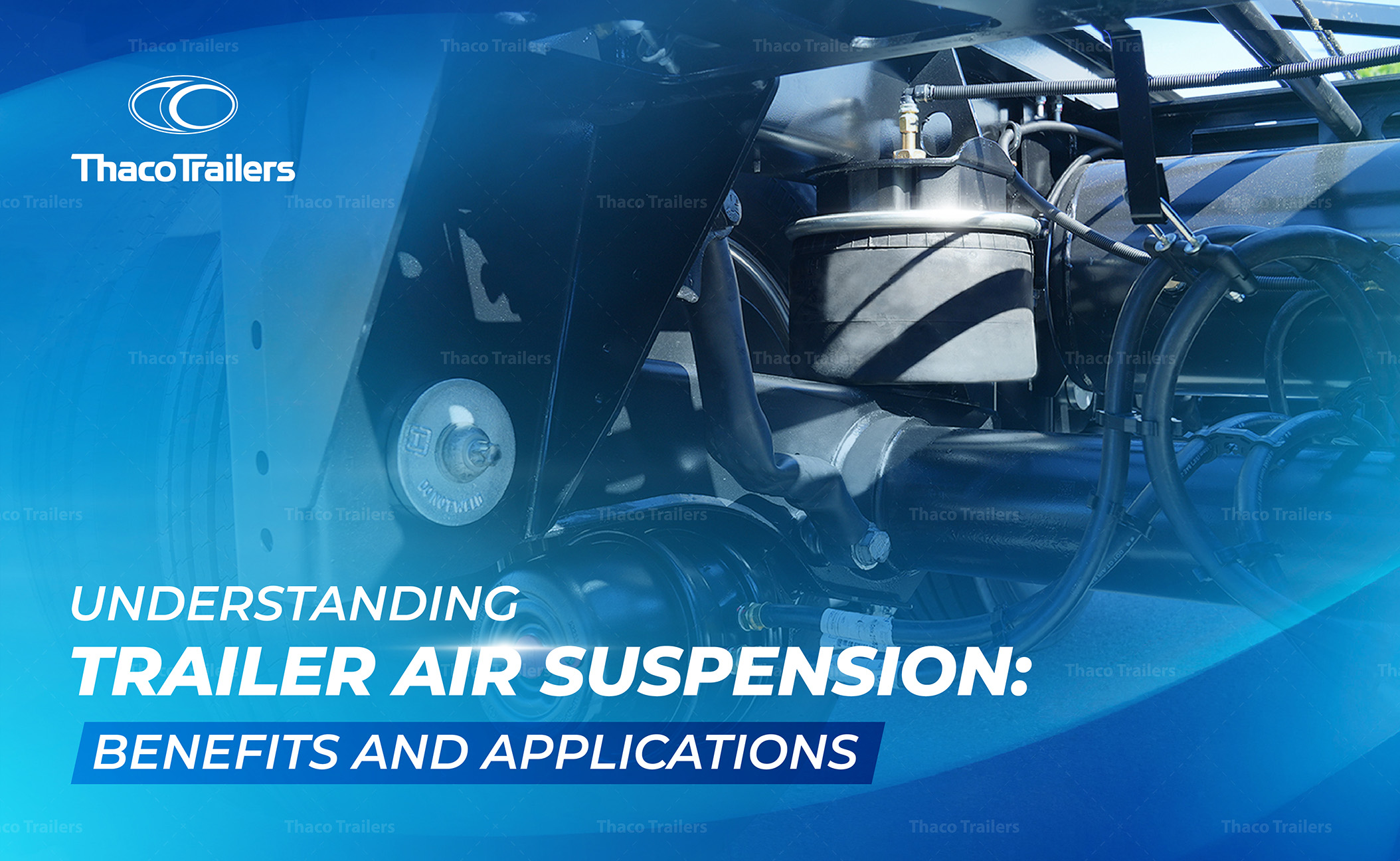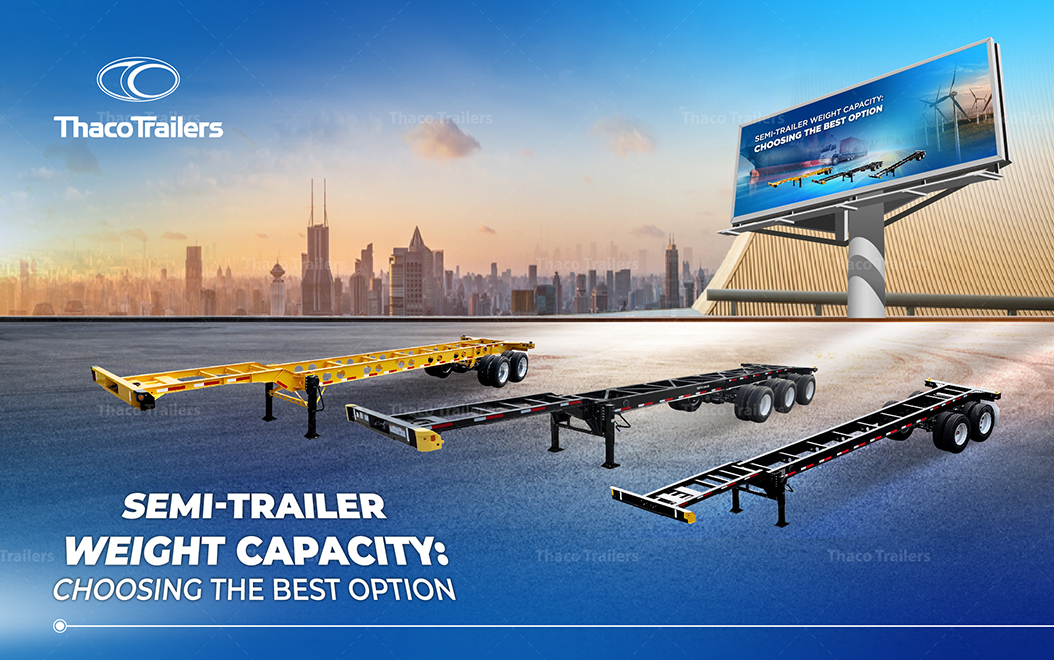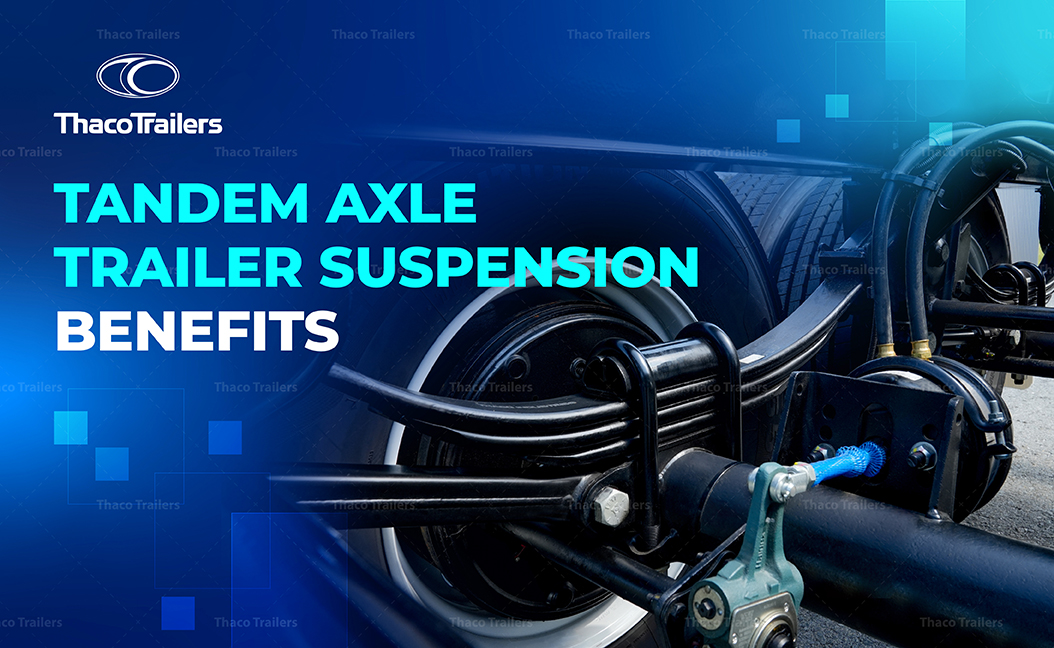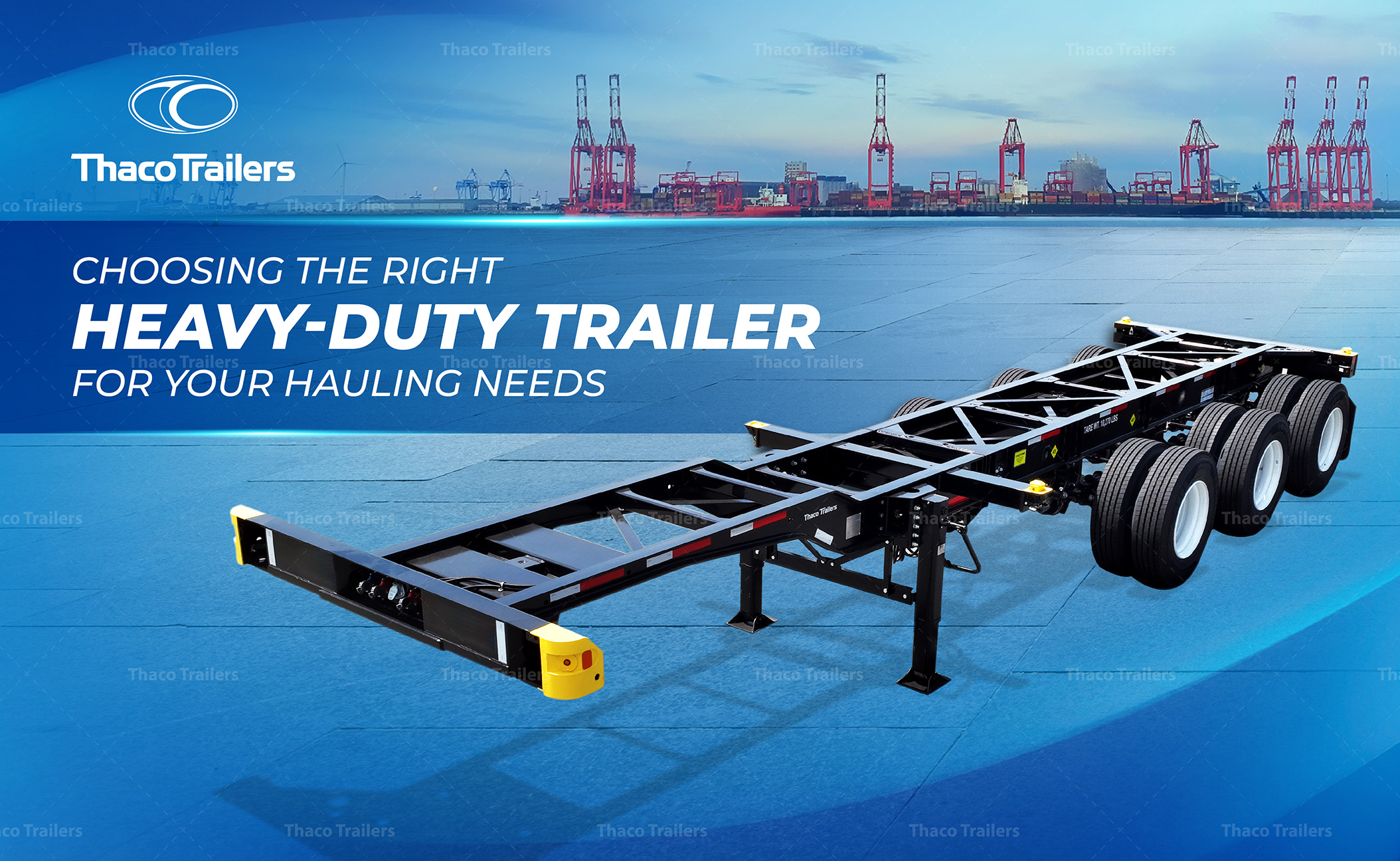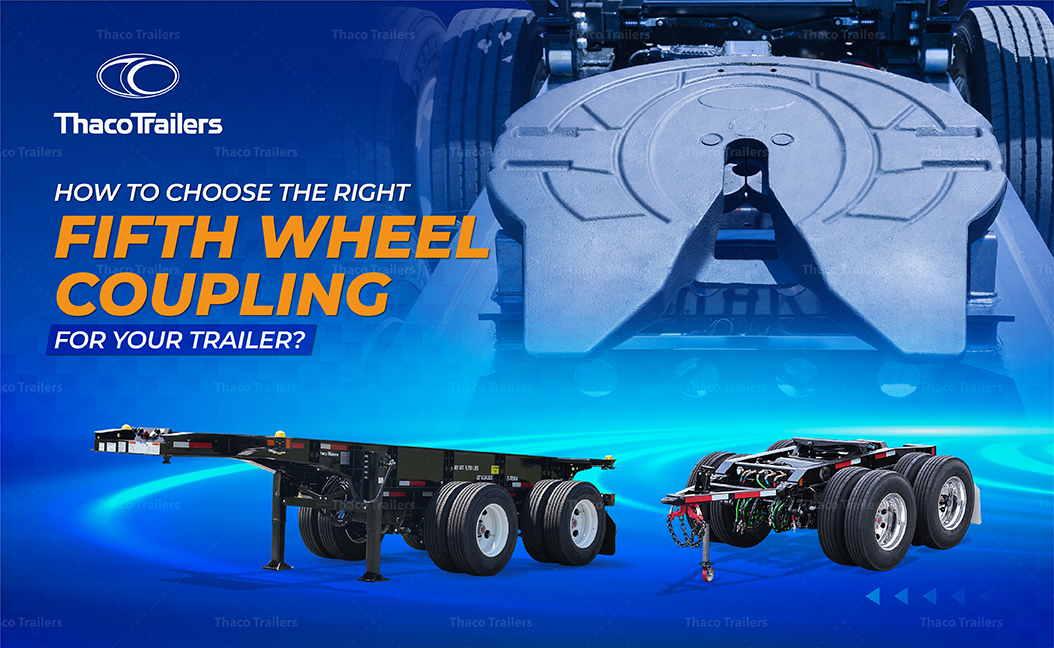WHAT IS AN ISO TANK CONTAINER? ENSURING GLOBAL STANDARDS FOR LIQUID CARGO
Container iso tanks are an optimal solution for the efficient and safe transportation of loads across borders. These ISO tanks exist in several types and sizes that meet ISO standards, and are ideal for use in the transportation of liquids, including hazardous chemicals as well as foodstuffs. Thaco Trailers will provide comprehensive information on iso tank specifications, types, and main applications of ISO tanks, and why one should choose ISO tanks in global logistics.
What are ISO tank containers?
Tank containers are specially designed to safely transport liquids, gases, and powders. Made of stainless steel with insulation and a protective layer, they fully conform to ISO standards in size, material, and construction. This makes them a reliable and efficient choice for moving various substances securely.
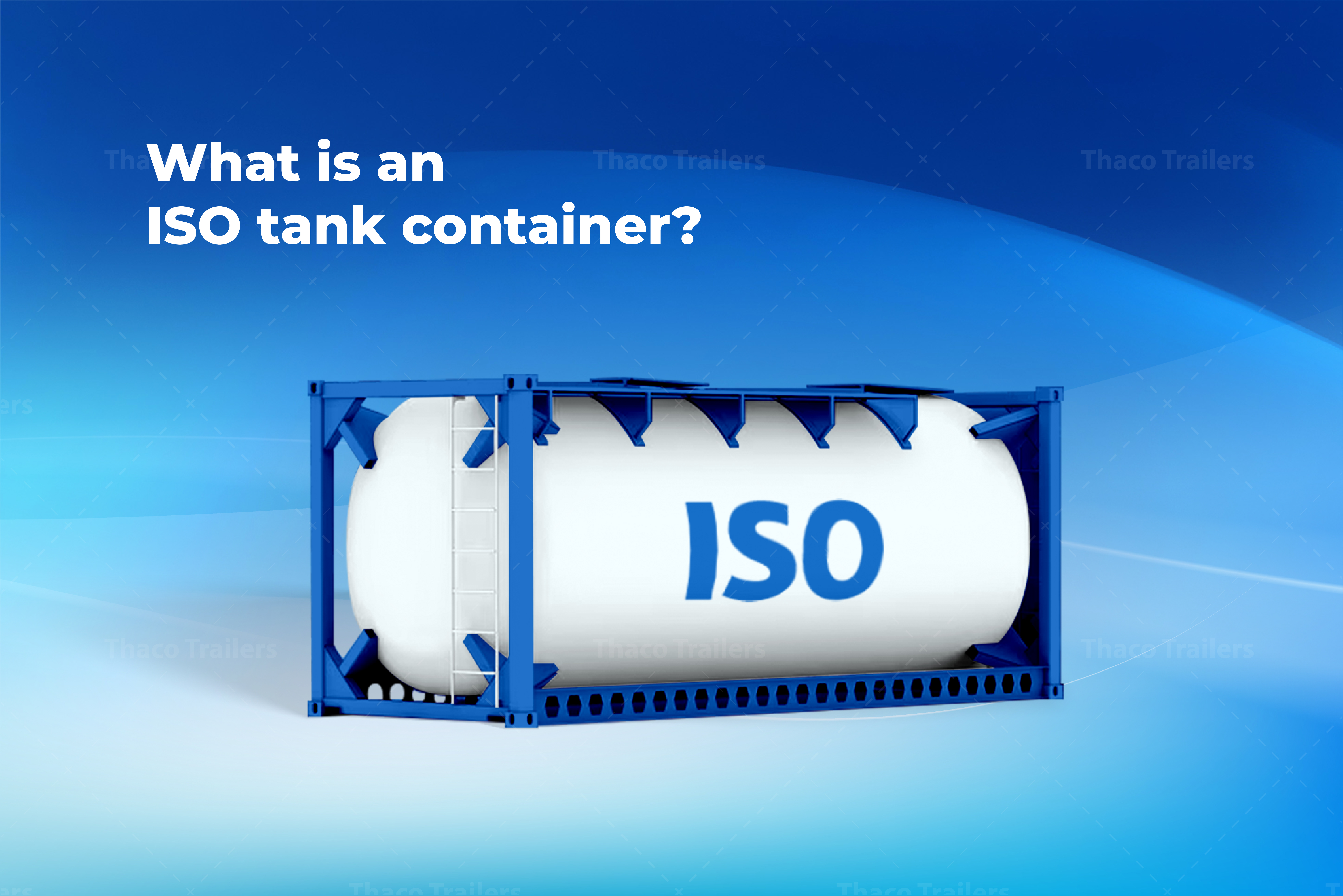
Read more: The Benefits of Using a 40ft Chassis in Freight Transportation
Importance of ISO certification for tank containers
Certification of ISO tank containers is essential to meet the standard requirements of the International Organization for Standardization (ISO). This certification covers aspects such as design, manufacturing, testing, and safety to ensure that the mobile transportable containers conform to the provisions of ISO tank.
Achieving ISO certification means that container iso tanks have undergone comprehensive inspections, rigorous testing, and thorough quality control procedures. This process ensures the containers’ reliability over time while maintaining their structural integrity.
ISO standards are developed with the aim of controlling leaks to protect both the environment and public health. The strong construction and detailed quality control minimize safety risks, ensuring the safe transport of goods and safeguarding lives, property, and the environment from potential harm.
Apart from safety and environmental gains, ISO implementation also creates customers’ trust. It assures clients that the tank containers they use adhere to the highest international standards. As a result, clients may enhance their reputation and provide a competitive edge in the global marketplace.
Read more: The ultimate guide to selecting tri-axle chassis for semi-trailer
Top 5 benefits of ISO tank containers
Enhanced safety
ISO Tank containers are designed with advanced safety features, adhering to strict international standards. To minimize the risk of leaks during transportation, international regulations require ISO tanks to be built to withstand high pressure. These tanks must be leak-proof and equipped with pressure relief valves capable of handling up to 3.5 bar of internal pressure, as specified by the International Tank Container Organization (ITCO). This ensures safety for both goods and the environment, minimizing the risk of accidents during transport.
Reliability and durability
Built to high standards, ISO tanks are tested for compliance with ISO regulations. ISO tank containers are built with high-strength corrosion-free material such as stainless steel, ensuring a long lifespan exceeding 20 years with proper maintenance. This durability makes them ideal for transporting chemicals across vast distances and under varying weather conditions, minimizing the risk of breakdowns or leaks during long journeys.
Global acceptance
ISO tanks are globally recognized, meeting international shipping and transport regulations for seamless cross-border use. Their standardized design guarantees consistent quality and safety, making them a trusted solution for businesses worldwide.
Cost savings
The large capacity of ISO tanks, typically ranging from 20,000 to 24,000 liters, allows for bulk chemical transportation, significantly reducing the number of trips needed. A single ISO tank can carry the equivalent of several road tankers. Combined with efficient intermodal handling, this translates to millions saved in transportation costs annually for the chemical industry.
Read more: Top 5 benefits of using slider chassis in container transport
Environmental sustainability
ISO Tanks Containers offer significant environmental benefits. A single ISO tank can replace up to 20 drums, significantly reducing waste generation. Additionally, their intermodal capabilities, which allow seamless transfer between various modes of transport, optimize fuel consumption and streamline logistics. According to the International Tank Container Organization (ITCO), intermodal transport using ISO tanks can reduce CO2 emissions by up to 30% compared to traditional methods such as road tankers.
With exceptional safety, efficiency, and environmental benefits, ISO Tank transport is the optimal solution for businesses requiring secure, sustainable, and reliable logistics for specialized goods.
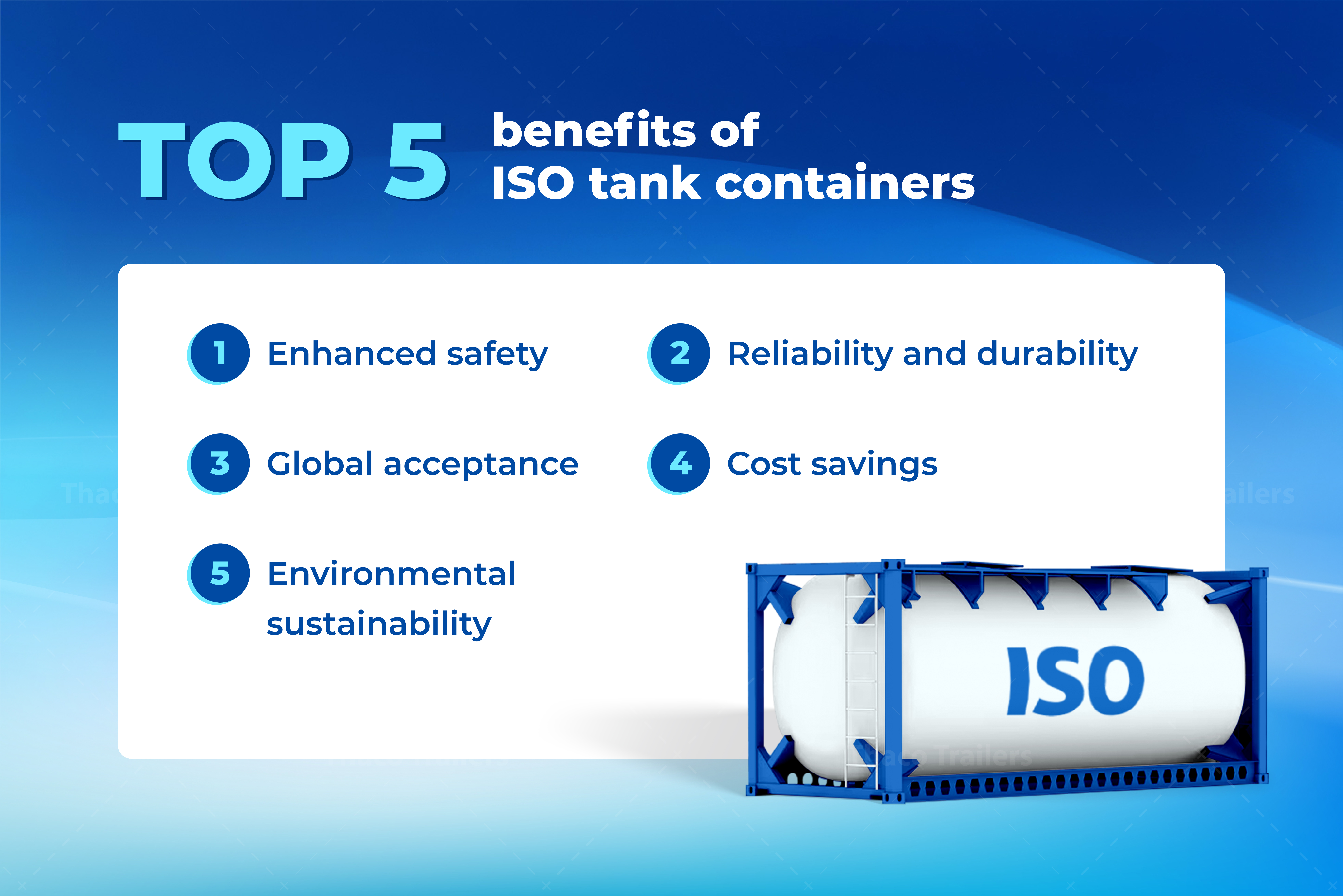
Types and dimensions of ISO tank containers
Types of ISO tank containers
ISO tank containers come in various types, each tailored to meet specific transportation needs, industry standards, and safety protocols for liquids:
ISO tanks also vary based on their classification and intended use:
- T1 ISO Tank: For light liquids
- T4 ISO Tank: For non-hazardous edible and non-edible oils
- T11 ISO Tank: For non-hazardous chemicals
- T14 ISO Tank: For hazardous chemical transport
- T20 ISO Tank: For highly hazardous pressurized liquids or liquefied gases
- T50 ISO Tank: For transporting LPG and ammonia gas
- T75 ISO Tank: For transporting liquefied gases
- Rubber-lined ISO Tank: For acid-based chemicals
Here’s an overview of the most popular iso tank container types:
- Reefer Tanks: These tanks feature built-in refrigeration systems, making them ideal for transporting temperature-sensitive beverages such as juices and milk, as well as pharmaceutical products. They maintain a consistently low temperature, ensuring product quality throughout transportation.
- Gas Tanks: These tanks are designed for enhanced durability and safety compared to common cylinders and are used to transport LNG, oxygen, helium, nitrogen, and CNG. They provide a secure and efficient solution for transporting various flammable gases for industrial applications.
- Silo Tanks: These tanks are specifically recommended for shipping large volumes of dry bulk materials, such as powders and grains. They are equipped with pressure relief valves and top hatches to facilitate easy loading and unloading. Some models also feature divided compartments, allowing for the transport of different types of bulk materials within a single tank.
- Food-Grade Tanks: These tanks are engineered to meet strict hygiene standards and are used for transporting liquid products such as beer, oils, and syrups. Constructed from stainless steel to prevent internal rust and corrosion, they include additional safeguards to avoid contamination and preserve product integrity.
Through the knowledge in various categories of ISO tanks presented in this paper, you are in a better position to determine the right solution to meet your transport requirements.
Dimensions of ISO tank containers
ISO tanks come in various dimensions, with the most common sizes being 20 feet and 40 feet, similar to standard containers. Their height typically ranges from 8 to 9 feet. With a carrying capacity of 14,000 to 26,000 liters, these tanks are ideal for transporting large quantities of liquids. The specific size and capacity can be adjusted based on the type of goods and transportation requirements. The table below provides detailed measurements and capacities.
| Capacity | Gross Weight | Tare Weight | Payload | Max. Cargo Temp. | Test Pressure | Working Pressure |
| 21,000 l | 36,000 kg | 3,650 kg | 32,350 kg | 120°C | 6.00 BAR | 4.00 BAR |
| 24,000 l | 36,000 kg | 3,650 kg | 32,350 kg | 120°C | 6.00 BAR | 4.00 BAR |
| 25,000 l | 36,000 kg | 3,650 kg | 32,350 kg | 120°C | 6.00 BAR | 4.00 BAR |
| 26,000 l | 36,000 kg | 3,650 kg | 32,350 kg | 120°C | 6.00 BAR | 4.00 BAR |
Factors affecting ISO tanker container capacity
Size and Dimensions of ISO Tanks
ISO tank containers are available in different sizes in terms of length, width and height and variations in these dimensions can affect the cargo capacity. Standard ISO containers typically range from 6 to 12 meters in length, but this can vary depending on the intended use.
Type of Cargo
Another important factor is the density of the goods being transported. High-density products, such as thick liquids, take up less space in the container, allowing more goods to be stored. Conversely, low-density products, such as gases or lightweight materials, occupy more space, reducing the available capacity. This can affect the ISO tank’s storage ability when transporting different types of goods.
Regulatory Requirements
Transportation regulations, including weight limits, safety standards, and hazardous material classifications, can impact the usability of an ISO container. For example, if the goods are hazardous, safety requirements such as the arrangement of valves, partitions, or required gaps may reduce the available space for cargo. Additionally, maximum weight regulations during transport will limit the volume of goods the container can hold.
Interior Design of the Tank
The internal structure of the ISO container, including the shape of the tank and the positioning of valves, fittings, or other components, can directly impact the usable volume for storing goods. These components may create dead space or reduce storage volume due to the unusable space around these parts. The design of the tank needs to be optimized to ensure that the cargo space is used as efficiently as possible.
How to choose the right ISO Tank Chassis?
Choosing the right ISO tank container involves careful consideration of several factors to ensure that the container meets your cargo’s requirements, optimizes costs, and adheres to safety and regulatory standards. Here’s a closer look at the critical aspects to consider:
Cargo Type
- Identify the specific type of cargo—liquid, gas, or powder—and whether it requires specialized containers, such as lined or insulated tanks for corrosive, hazardous, or temperature-sensitive materials.
- Certain ISO tanks, such as T14 or T20, are designed for specific types of chemicals or liquefied gases, ensuring the right level of durability and protection.
Volume Requirements
- Evaluate the volume of your cargo and match it with the capacity of the ISO tank container (typically ranging from 20,000 to 26,000 liters).
Compatibility with Multiple Transport Modes
- Consider the flexibility of transporting the ISO tank across different modes (road, rail, sea) seamlessly.
- Ensure that the container is durable enough to withstand multiple transfers if intermodal transport is involved.
Regulatory Compliance
- Verify that the ISO tank complies with international regulations (IMDG, ADR, DOT, and RID) to avoid issues in transport and handling, especially for hazardous cargo.
- Check for compliance certifications such as ASME or EN codes that indicate quality and suitability for specific cargo types.
Safety Features
- Consider the following aspects of the equipment including pressure relief valves, emergency venting, and protective coatings that are essential for handling volatile or sensitive materials.
- Some ISO tanks come with heating or cooling systems, which are useful for cargo that must maintain a stable temperature during the transportation period.
Cost-Effectiveness
- Evaluate any associated cost base with the tank, this might be the cost of purchasing or leasing a tank, running costs, and whether the tank size might reduce your shipping cost
- Estimate the costs and benefits of investing such a rather large amount of money right away, especially if the tank might be used over and over again across multiple shipments.
- Balancing these factors enables the identification of an ISO tank container that meets operational requirements while providing optimal performance, safety, and economic value for the cargo.
Difference between a tank container and an ISO tank container
Tank containers and ISO tanks have similarities but are not identical. Tank containers are a broad category that includes any container designed for transporting liquids and gases. ISO tank containers, or ISO tanks, specifically conform to international shipping standards, ensuring consistency in size, durability, and safety. While every ISO tank is a tank container, not all tank containers meet ISO standards. Designed for global transport, ISO tanks comply with strict international regulations to guarantee secure and efficient shipping.
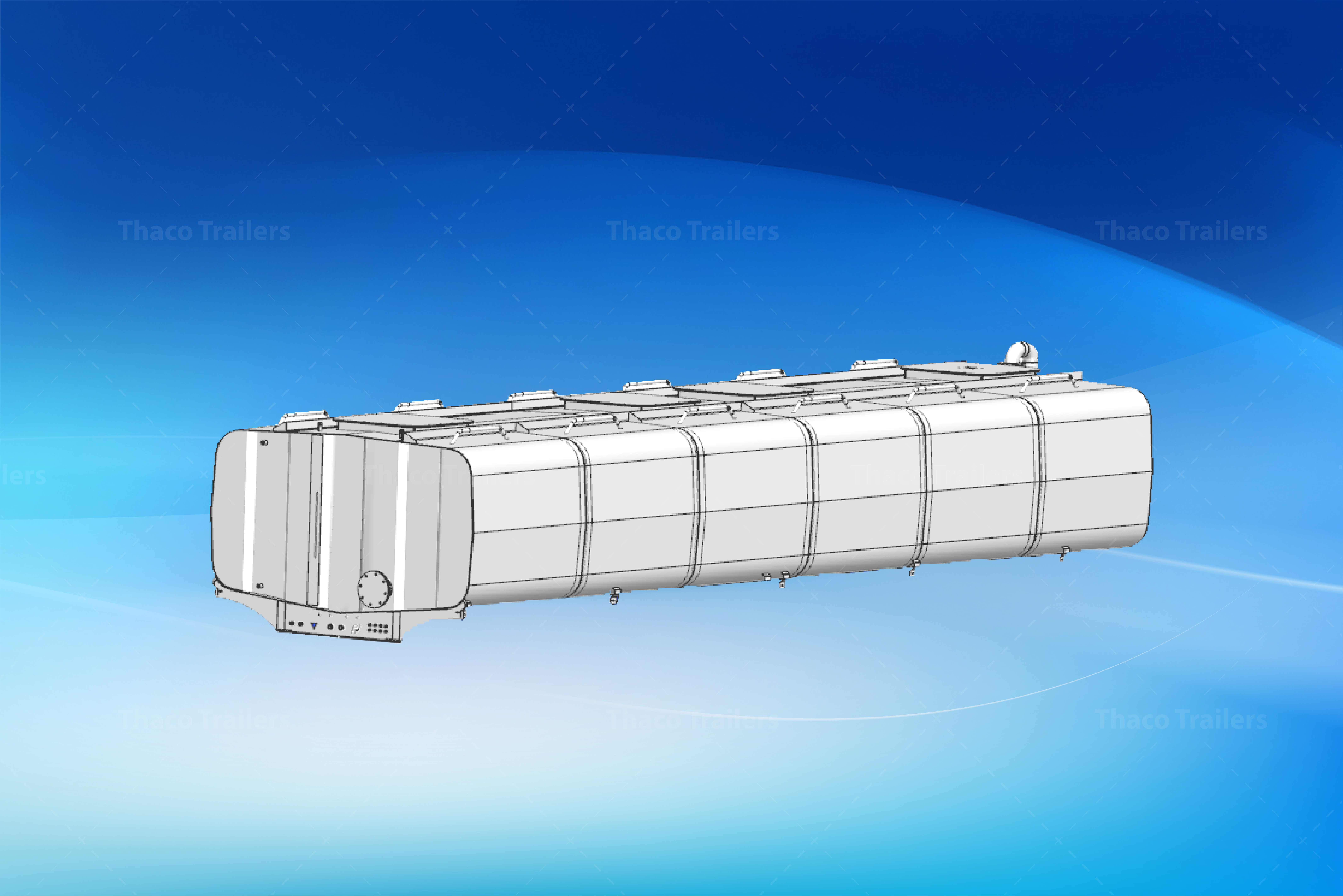
Read more: Thaco Trailers: Trusted Tanker Trailer Manufacturer for the US Market
Thaco Trailers – Reliable partner in Drop Frame Tank Chassis manufacturing for the U.S
Thaco Trailers is a leading Southeast Asian manufacturer specializing in high-quality drop frame tank chassis for the U.S. market. With advanced production technology, a skilled workforce, and an annual output of 30,000 units, Thaco Trailers meets stringent international standards, including DOT, AAR, ANSI, TOFC, FMVSS, SAE, and TTMA. The company excels in producing medium and heavy-duty trailers using corrosion-resistant materials and precision engineering to ensure durability and performance under demanding conditions. Its engineering team employs simulation tools and SCADA-based quality control systems to guarantee compliance with U.S. safety and efficiency requirements. Trusted across various sectors such as transportation and logistics, Thaco Trailers delivers dependable solutions tailored to fuel, chemical, and dry bulk hauling, making it a strong choice among tanker trailer manufacturers in the U.S. market.
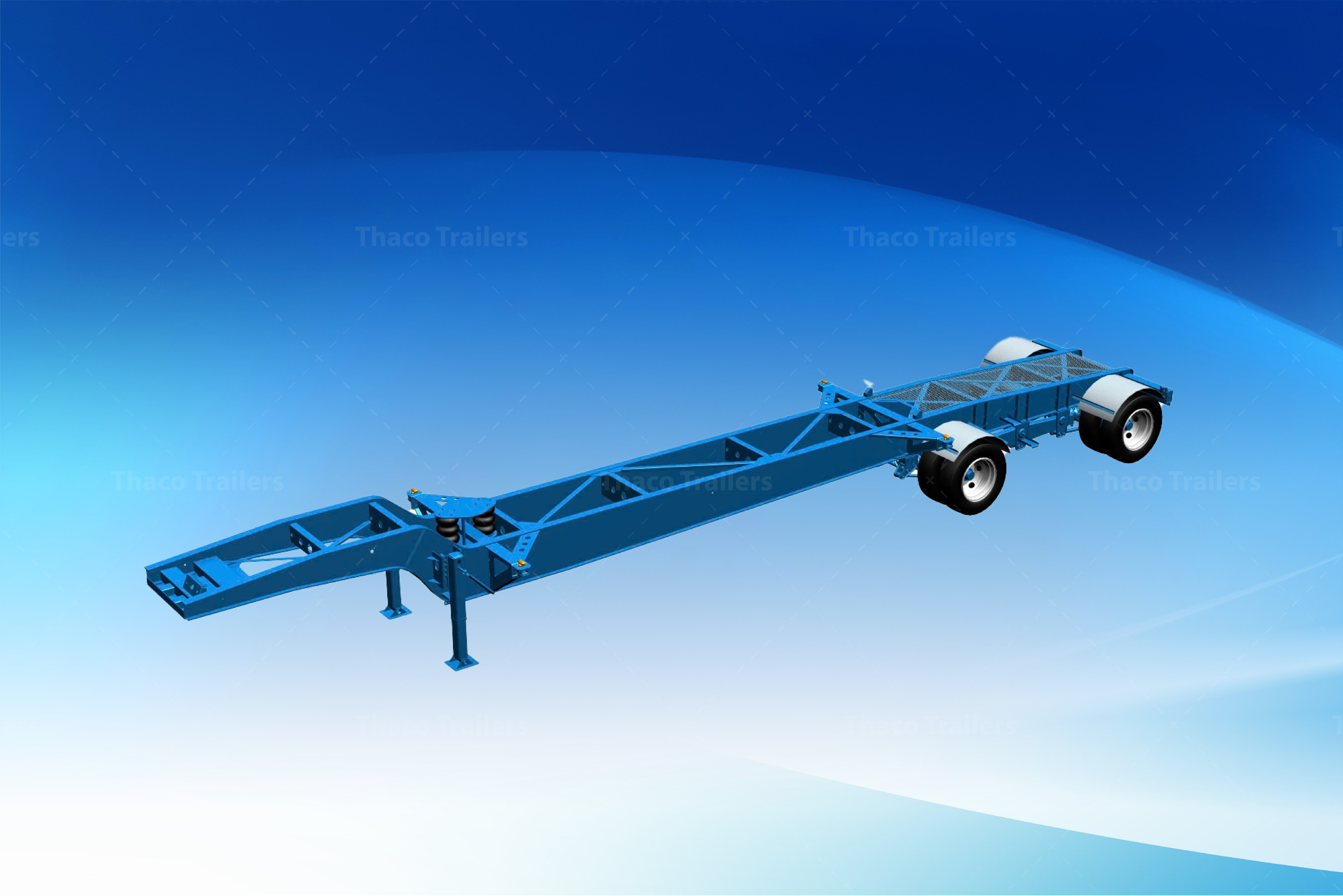
Contact Information:
- Hotline: (+84) 933 805 707
- Email address: thacosv@thaco.com.vn

